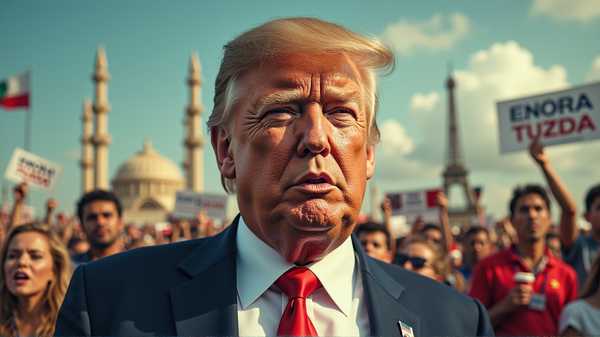Elon Musk's America Party: The Disruptive Force in Politics and Markets
Elon Musk's America Party introduces major shifts in U.S. politics, threatening the traditional two-party dominance and impacting markets. According to SOURCE_LINK, investors need to adapt to the evolving landscape.

The sudden emergence of Elon Musk’s America Party in mid-2025 has sent shockwaves through the U.S. political landscape and financial markets. This formidable entry challenges the long-standing two-party system and presents both seismic risks and opportunities for investors. According to AInvest, Musk’s $280 billion fortune and social media influence via platform X—spearhead aspirations of fiscal responsibility, tech-driven innovation, and an unswerving stance against “waste & graft”.
The GOP Conundrum: Friend or Foe?
A crucial question surfaces for the Republican Party: is the America Party an existential threat or timely ally? Musk’s clash with former President Donald Trump over the latter’s $3.3 trillion “Big, Beautiful Bill” budget proposal has created friction. While Musk vows to unseat lawmakers in favor of the bill, Trump’s response of threatening subsidy cuts to Musk’s ventures has intensified the dispute. This internal conservative strife could jeopardize the GOP’s prospects in the looming 2026 midterms. However, by embracing fiscal conservatism, deregulation in tech, and mitigating wasteful expenditure, the GOP might poorly retain Musk’s supporters.
Policy Waves: Beneficiaries and the Briefly Unfortunate
Beyond fiscal discipline, the America Party’s platform casts a wide net on industry-specific policies:
- Technological Freedom: Musk champions uninterrupted growth in AI, EVs, and space ventures, aligning with Silicon Valley. Tesla, SpaceX, and startups poised in these verticals stand to gain.
- Healthcare and Education Reforms: The party’s resistance to government-managed healthcare and promotion of telemedicine caters to private insurers and digital educators.
- Energy Strains: While endorsing decarbonization, their lenience towards regulations could boost traditional energy sectors over green alternatives in current policies.
On the flip side, sectors linked to stringent regulations or progressive agendas like labor laws, environmental subsidies, and pharmaceuticals might encounter unforeseen obstacles.
Navigating Political Volatility in Markets
The rise of the America Party introduces volatility, especially in segments influenced by governmental policies:
- Tech Investments: Musk’s sway might uplift tech values; however, erratic policy instances could induce unforeseen variations.
- Defensive Industries: Utilities and healthcare might underperform if deregulation incapacitates their profit margins.
- Elections Balancing: Engaging in short positions with Democratic-favored sectors or adopting volatility ETFs could serve as insulation amidst electoral tensions.
Investment Blueprint: Crafting Strategic Responses
- Embrace Tech Freedom: Elect investments in tech firms thriving on deregulation, steer clear of those depending on federal support.
- Adopt Fiscal Conservatism: ETFs focused on financial or infrastructure might show stable growth within bipartisan accords.
- Hedge Against Instability: Instruments like options or inverse ETFs safeguard against abrupt market fluctuations.
Conclusion
The America Party’s ascent goes beyond typical political parlance; it’s a harbinger for major recalibrations within the U.S. markets. For investors, adjusting portfolios to mirror this tech-induced vigor while navigating regulatory doubts is crucial. As the 2026 elections approach, the translation of Musk’s political clout into legislative authority could either amplify market turbulence or vanish as a temporary phenomenon.
Final Thought: In the unfolding saga of politics and markets, change remains the sole constant. Stay vigilant and adaptable.





